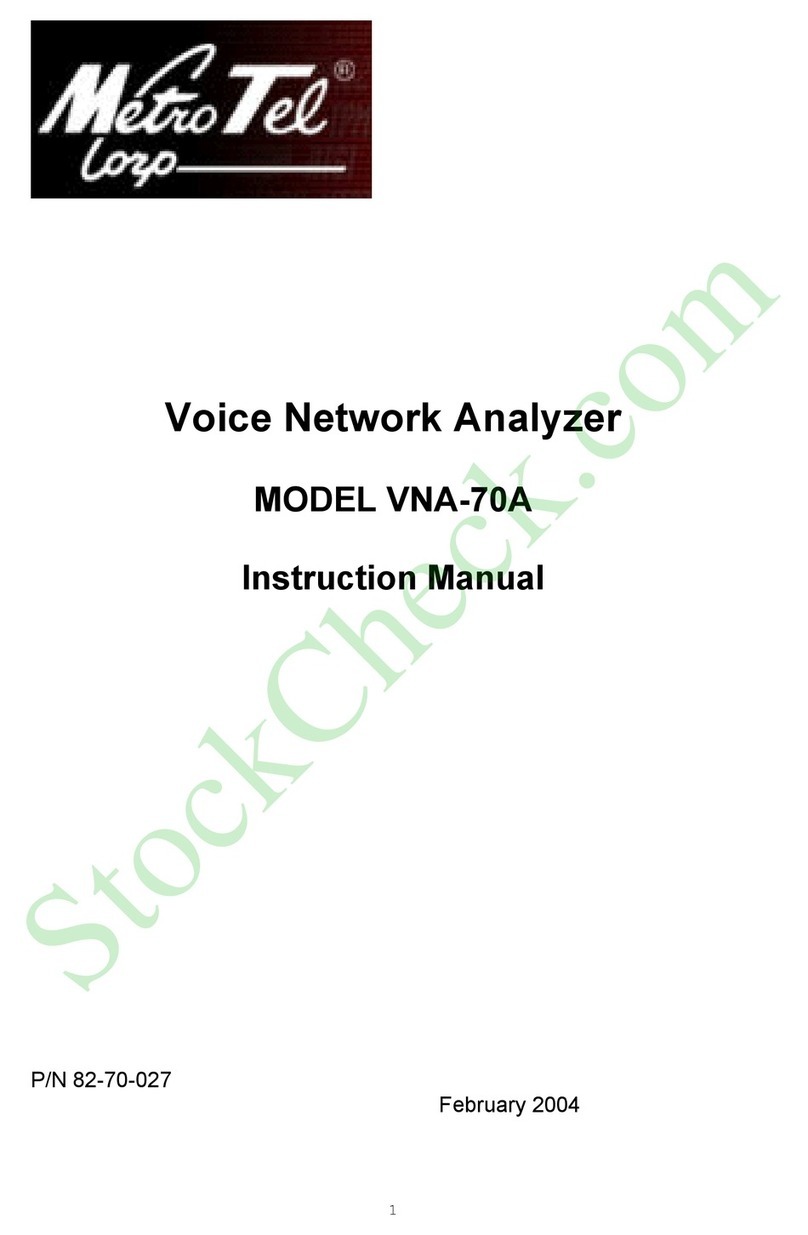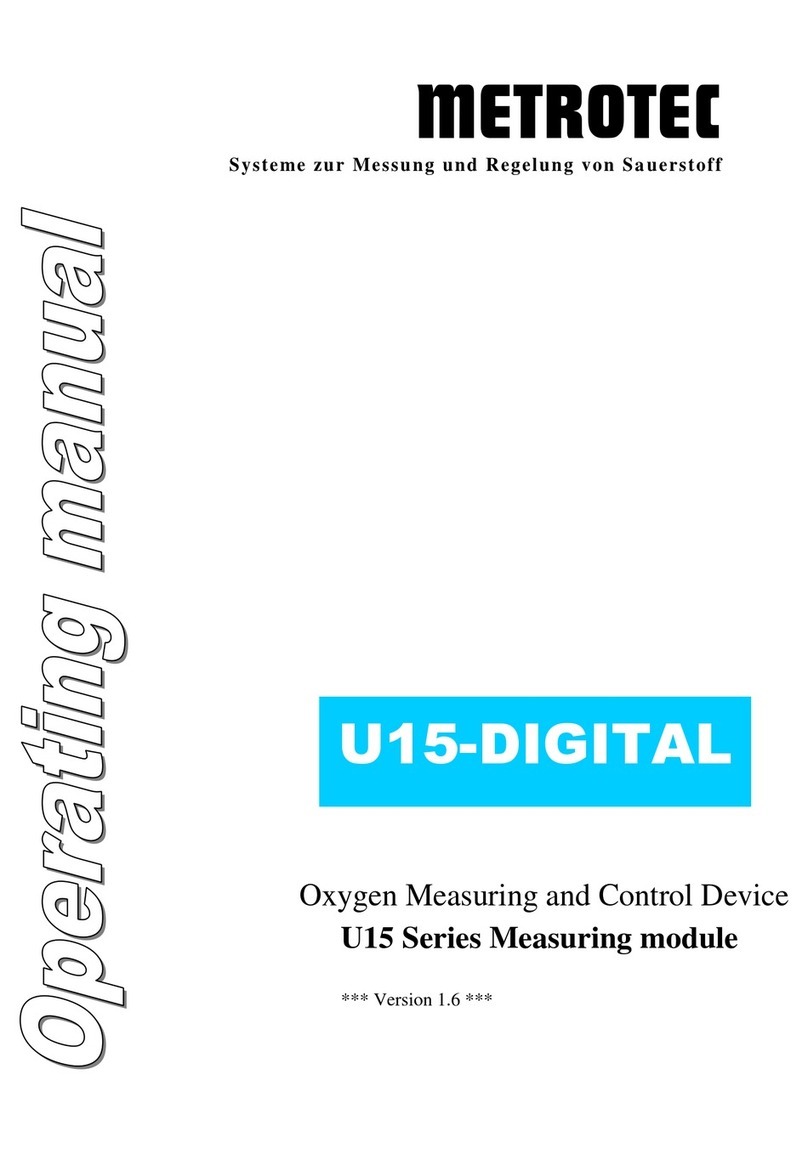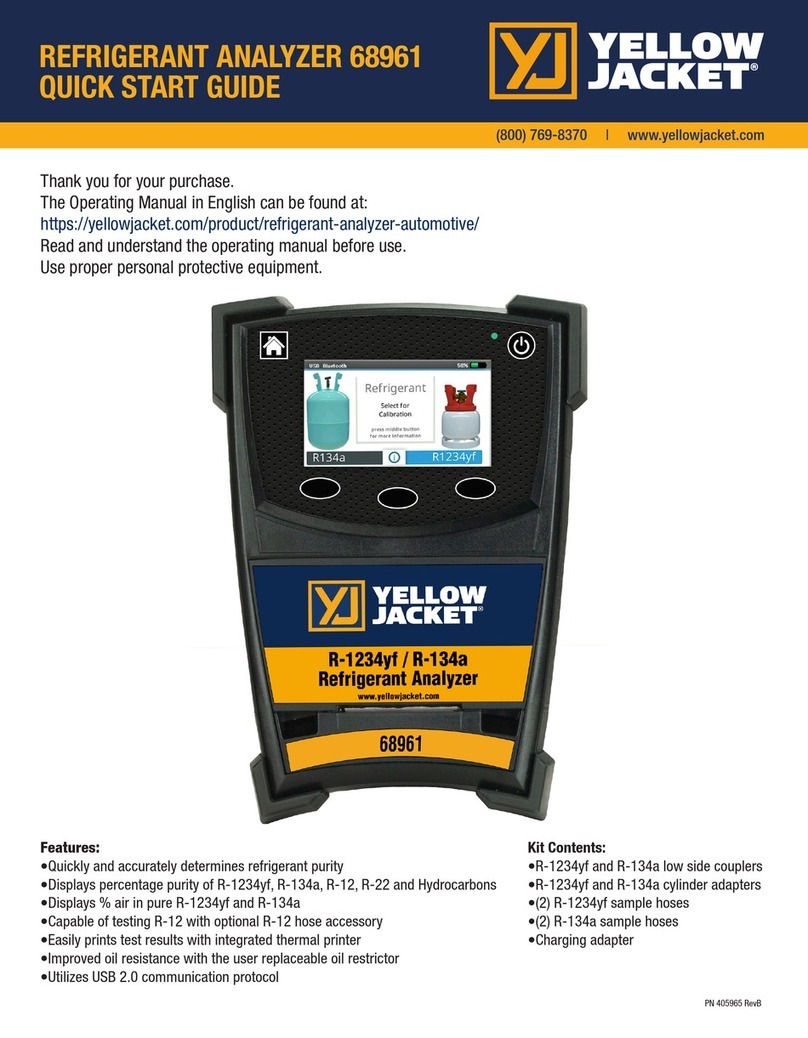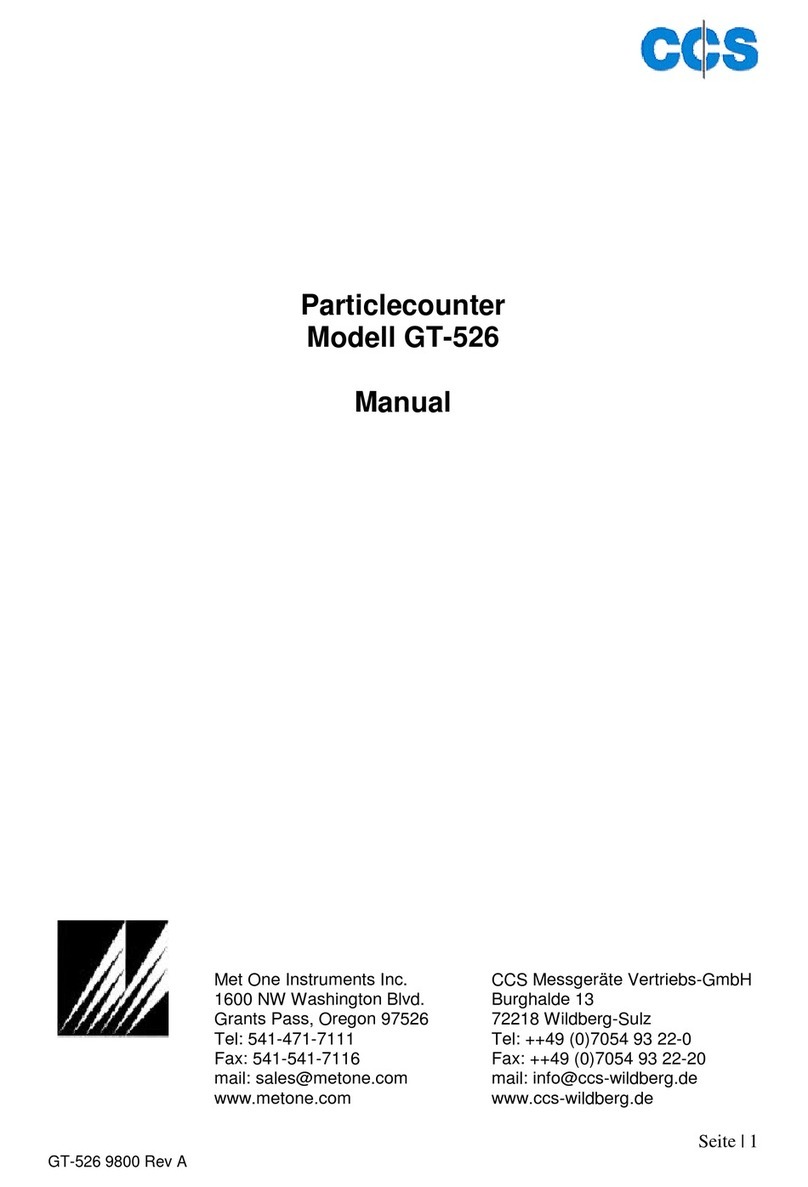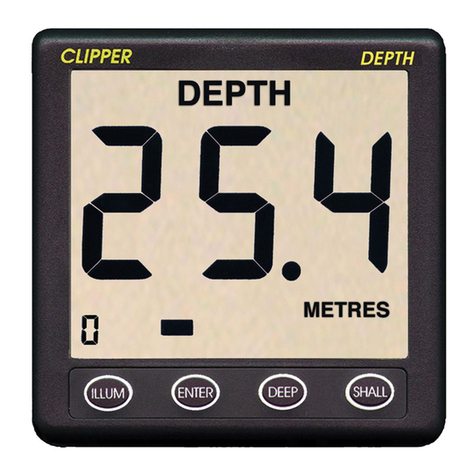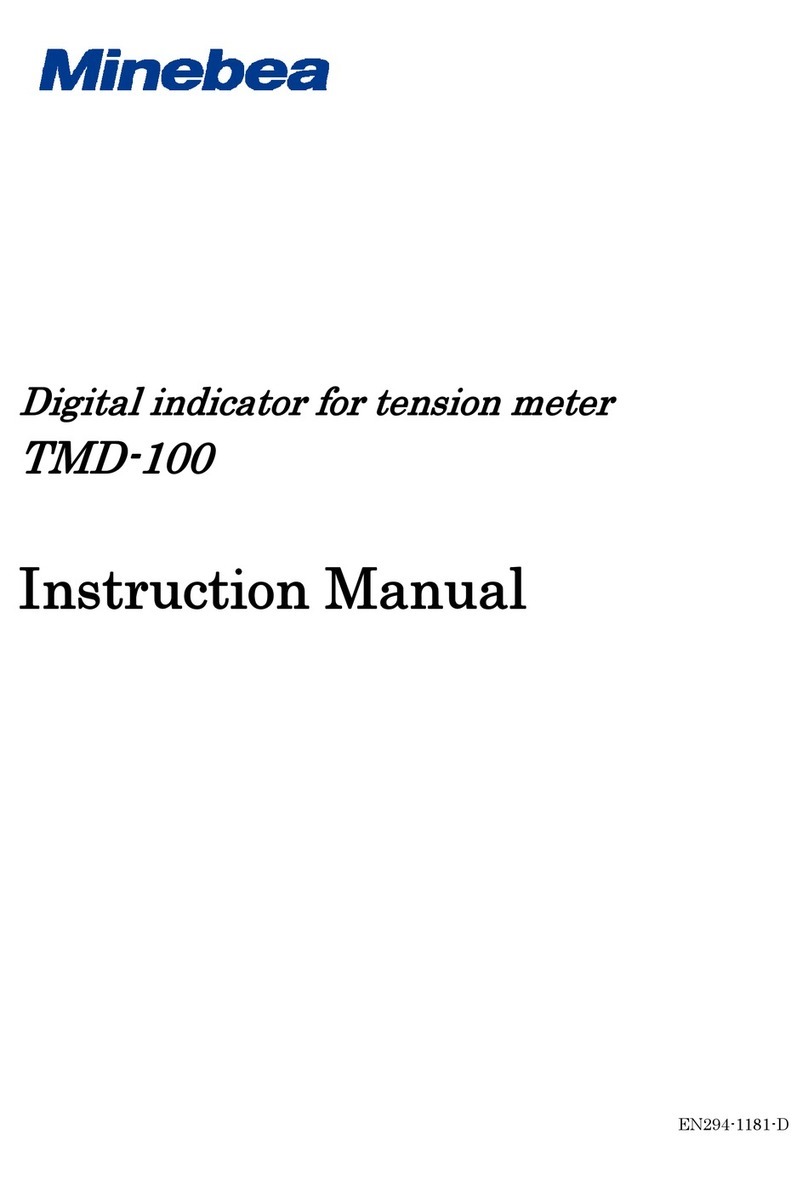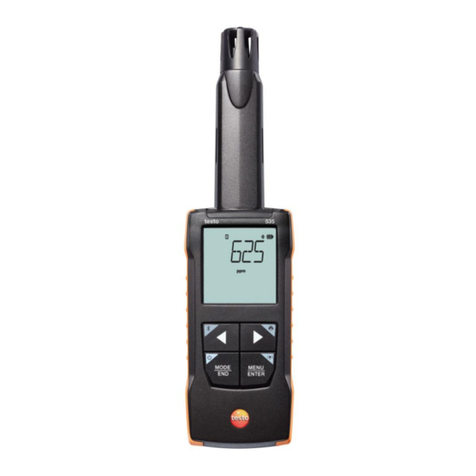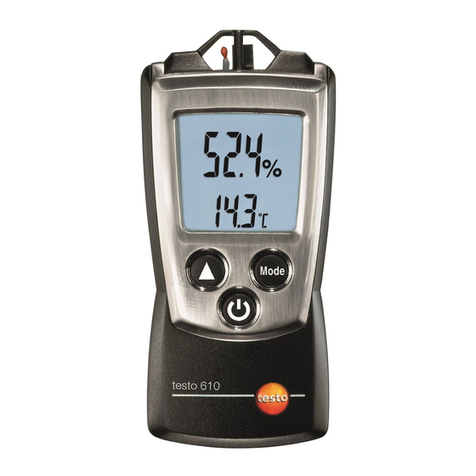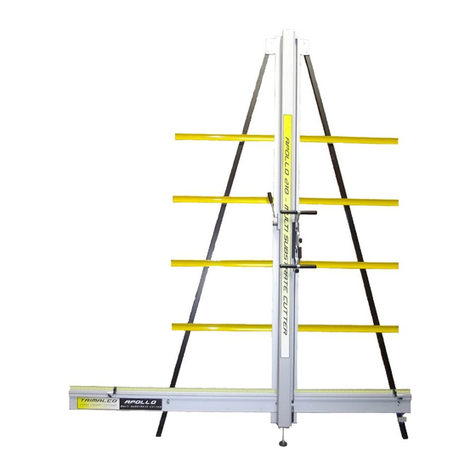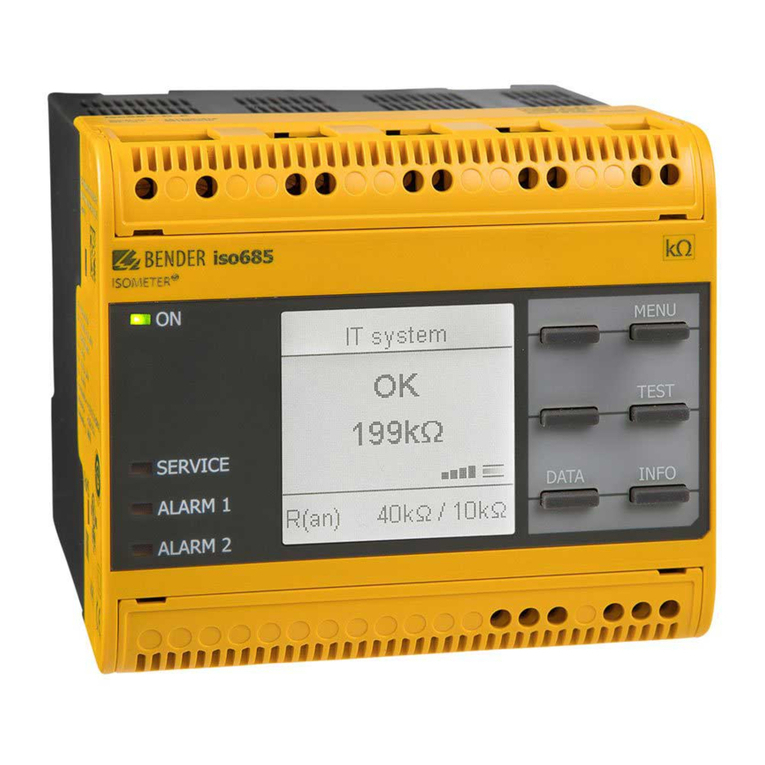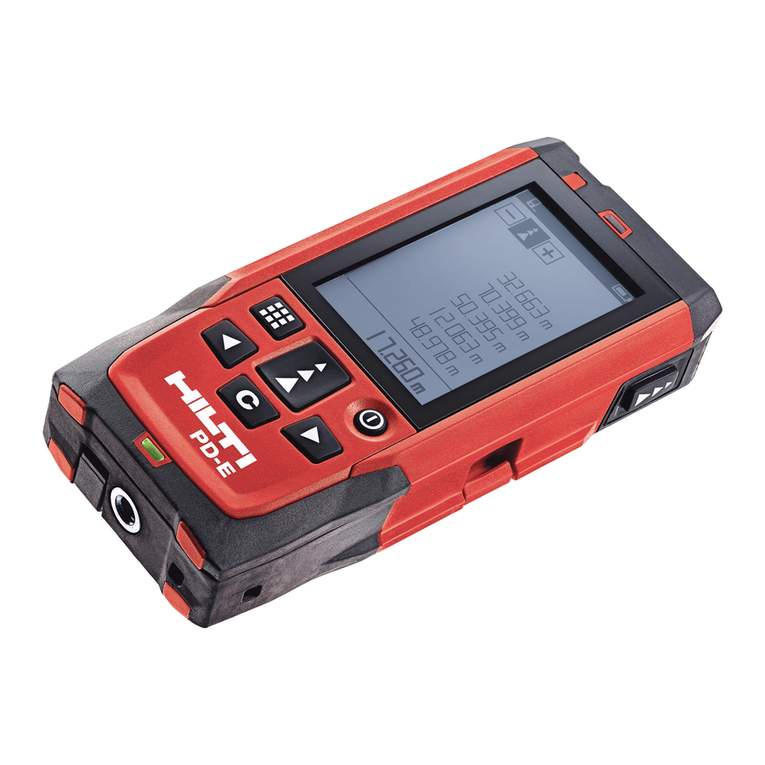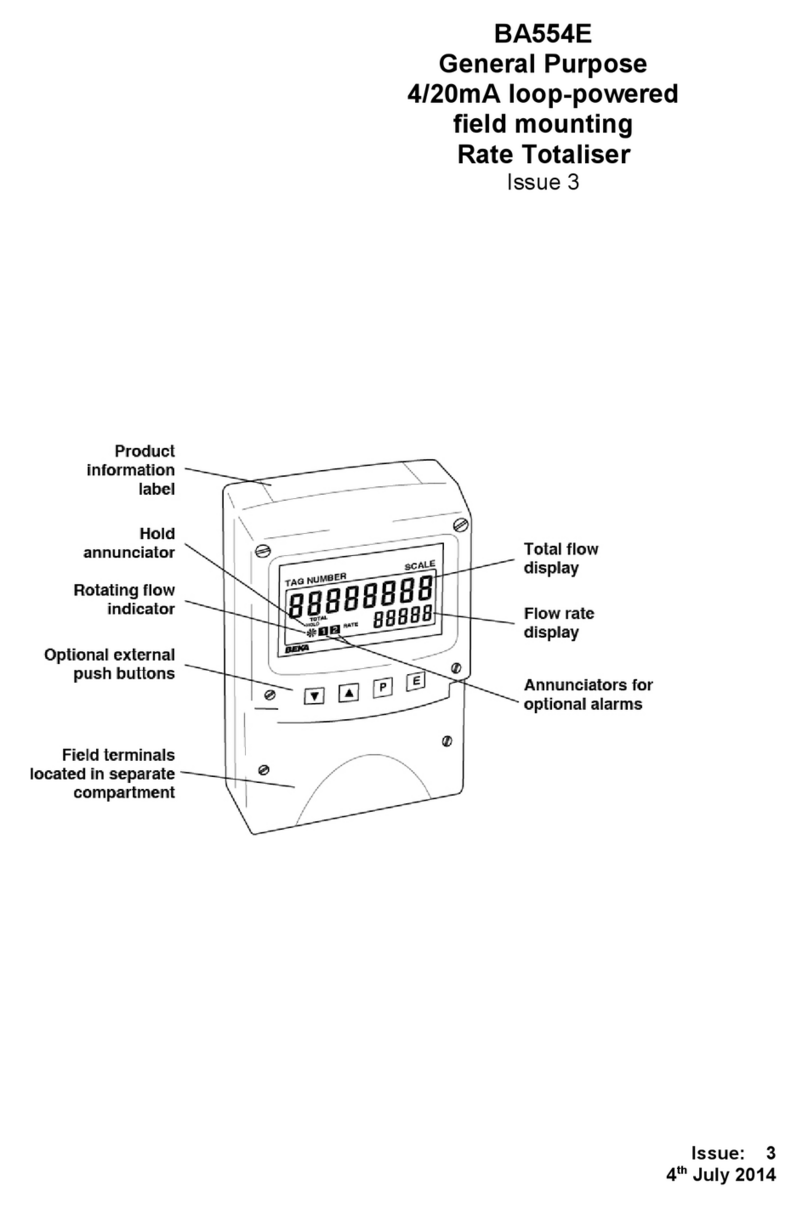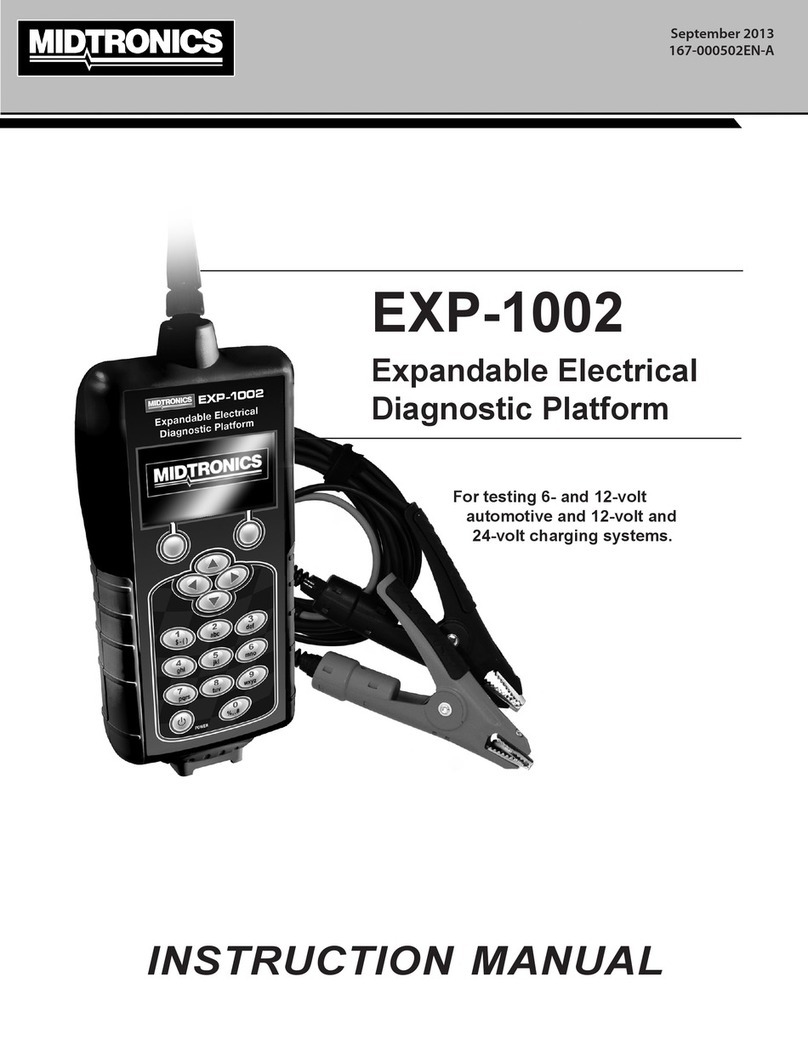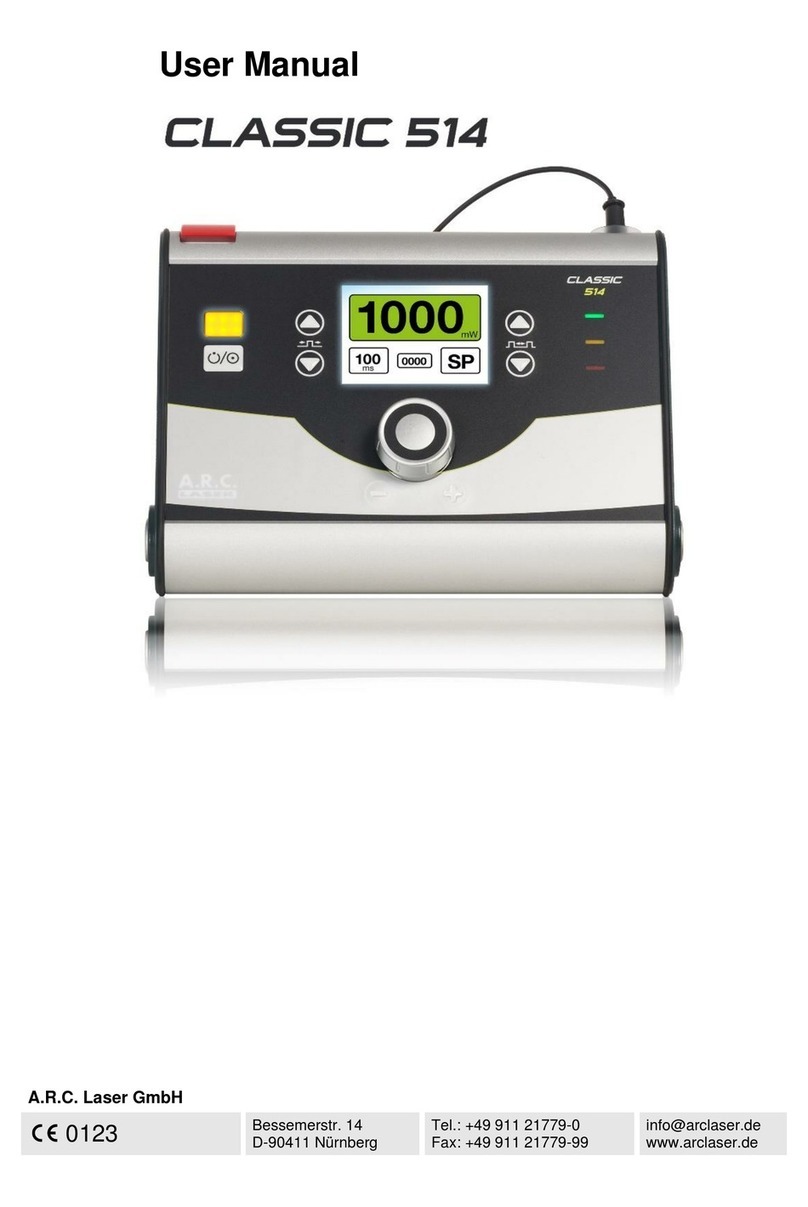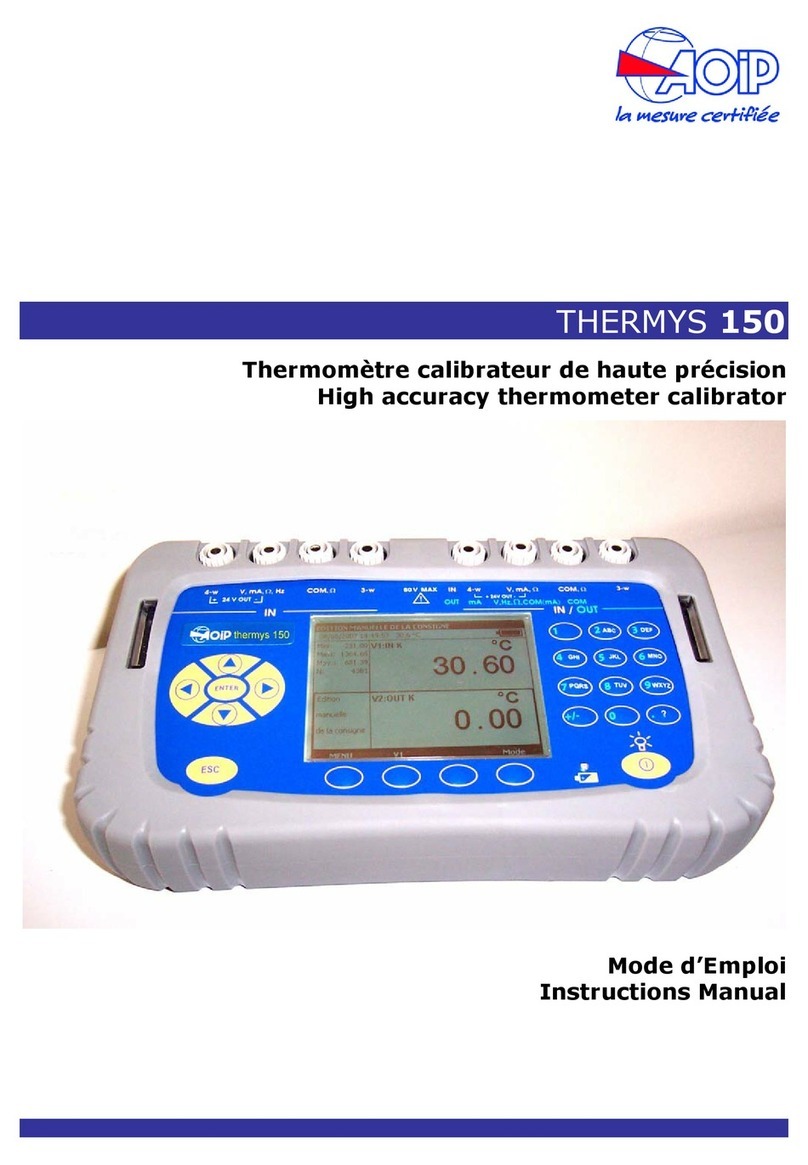METROTEC GSM Series User manual

Oxygen Measuring and Control Device
Typ GSM Series
*** Version 2.2 ***
METROTEC
S yst ems f o r o xy ge n me a su re me nt
GSM-touch

METROTEC
EC Declaration of Conformity
for
Oxygen measurement and control unit
GSM-touch
This device has been designed for industrial purpose in accordance with
EN 61000-6-4
EN 61000-6-2
It is compliant with the directives:
EMC directive: 2014/30/EU
Low voltage directive: 2014/35/EU
RoHs: 2011/65/EU
This device complies with following standards:
EN 61010-1
EN 61000-6-4
EN 61000-6-2
EN 63000
Description of measures taken to assure compliance:
Quality management system DIN EN ISO 9001:2015, No. 12 100 27736 TMS
This declaration becomes invalid if changes are made without
our consent.
Kirchheim/Teck, 07/10/2019
Place, Date Signature
© 2019 METROTEC GmbH
Heinkelstraße 12 • D-73230 Kirchheim
Telefon 07021/95336-0 • Fax 07021/95336-13

METROTEC
3
Contents
1 SAFETY INSTRUCTIONS........... 4
2 PREFACE ...................................... 5
3 INTRODUCTION ......................... 7
3.1 Measurement principle ............. 7
3.2 Measuring Electronics.............. 8
3.3 Sensor ...................................... 8
4 GENERAL LAYOUT.................... 8
4.1 Description of the Measuring
Electronics........................................... 8
4.2 Description of the Sensor ......... 9
4.3 Drawing of Cable Routing...... 10
5 DEVICE START-UP ................... 11
5.1 Switching the Measuring Device
on 11
5.2 Measurement.......................... 12
5.2.1 Sample Gas Connection.. 12
5.2.2 Flow............................... 13
5.3 Bottled Gases ......................... 15
5.4 Process Gases......................... 15
5.4.1 General .......................... 15
5.4.2 Hot Process Gases.......... 15
5.4.3 Special Process Gases.... 15
5.4.4 Specific Information ....... 16
5.4.5 Filter System: Structure.. 16
5.5 Switching the Measuring Device
off 16
6 SELECTING THE MEASURED
VALUE ................................................ 16
6.1 O2.......................................... 17
6.2 Log O2................................... 18
6.3 Dew Point .............................. 19
6.4 Lambda.................................. 19
6.5 O2Red (O2in H2)................... 20
7 PARAMETERISATION ............. 21
7.1 Level “0” ............................... 22
7.2 Level “1” ............................... 23
7.3 Level “2” ................................23
7.4 Level “3” ................................23
7.5 Menu Structure .......................24
8 CONFIGURATION .....................31
8.1 Enabling Configuration...........32
8.2 Correcting the Measured Value
33
8.3 Setting the Alarms ..................34
8.4 Setting the Trend Graphic
Window .............................................34
8.5 Definition of Analog Outputs..34
8.6 Calculating the Dew Point ......35
8.7 Calculating the Lambda Value 35
8.8 Pre-Setting of Data Logging ...35
9 DATA LOGGING ........................35
9.1 Starting the Data Logging .......35
9.2 Closing the Data Logging .......37
9.3 Data File.................................38
10 NETWORK ..................................39
10.1 Setting up an Ethernet Network
39
11 INTERFACES ..............................40
11.1 Analog Interfaces....................40
11.2 Digital Interfaces ....................40
11.3 Connection Diagram...............41
12 SPECIFICATIONS ......................42

METROTEC
4
1 Safety instructions
&Please read through this operating manual very carefully before
installing and commissioning the unit.
Incorrect utilisation will invalidate the guarantee!
Correct functioning and the operating safety of the unit can only be
guaranteed if the ambient conditions specified in the Specifications
chapter are maintained.
Only qualified specialists are permitted to commission and operate
the unit. The owner of the unit must ensure that the installation
complies with the relevant laws and directives. These include, for
example, the EU Directives covering safety in the workplace,
national safety in the workplace regulations and the prevention of
accidents regulations, etc.
You must ensure that the power supplies concur with the details
listed on the nameplate. All of the covers needed to ensure that the
unit cannot be touched when operating must always be fitted. You
must consider the effects of the overall operation and take the
necessary precautions if the unit will be linked up with other
equipment and/or devices before you switch on.
Parts and surfaces will occasionally become and remain hot during
the installation or de-installation. Suitable precautions must be taken
in order to prevent injuries or damage to the unit from occurring.
If the unit shows signs of having been damaged and you are of the
opinion that that safe operation is no longer possible then you must
not run the unit. We recommend that periodical inspections are
carried out at our factory or by our customer service department at
least once a year.
Future disposal must always comply with the legal regulations.

METROTEC
5
2 Preface
With the aid of an oxygen sensor , the measurement unit serves to measure the
oxygen partial pressure in gaseous atmospheres. Such sensors work at high
temperatures and so it is necessary for measures to be taken to ensure that no
flammable gas mixtures contact the sensor or the unit. In the event of the sensor
ceramic suffering breakage the measurement gas could escape or air could enter the
measurement gas side of the unit and so suitable measures have to be taken to
avoid such an event leading to environmental pollution or damage being done to
equipment.
In the event of incorrect parameters being set or the occurance of leakage,
corrosion, condensation, etc., damage could be done to the equipment and
incorrect measurement results be indicated and so it is essential that all parts
of equipment be regularly serviced.
The oxygen sensor and its accessories are subjected to
thorough quality control in accordance with DIN ISO
9001 in the course of their manufacture and testing.
They must only be installated and used in compliance
with all applicable local and special regulations,
particularly the VDE and DVGW standards that apply in
Germany.
The measurement accuracy and effective function of the
measurement device will need to be checked at intervals
whose frequency will depend on the applicaton
concerned. Such a check must be effected in the course of
a calibration and examination check on the equipment
being first put into operation.

METROTEC
6

METROTEC
7
3 Introduction
3.1 Measurement principle
Oxygen measurement units are designed to process signals transmitted from an
oxygen sensor constructed of stabilized zirconium oxide. Zirconium oxide, a ceramic
material that is also spoken of as a solid-state electrolyte, acts as an excellent
oxygen-ion conductor when at a high temperature.
Within certain temperature limits, that depend on the doping of the material
concerned, such ion conductors are able to fill empty spaces in their crystal lattice
with oxygen ions. The oxygen ions occur against an electrically conductive surface
that is generally of platinum.
The concentration of oxygen in a measurement gas is thus decisive for the extent of
oxygen activity, and thus for the number of oxygen ions.
An oxygen sensor consists essentially of a solid-state electrolyte with a contact
surface on both sides.
One side of the electrolyte is in contact with a reference gas such as air, and the
other with the gas whose oxygen content is to be measured. The mechanical
construction of the sensor prevents contact between the two gases so that there is
no risk of their being intermixed.
Depending on the application concerned, heated or unheated sensors are used.
Unheated sensors are generally used in furnaces while heated sensors are used for
applications where the gas to be measured is at a temperature of less than around
600 degrees Celsius (the measurement principle necessitates the sensor being
maintained at a temperature of not less than 500 - 650 degrees Celsius).
Heated sensors are maintained at a set temperature by an electronic temperature
regulator that forms part of the electronic control unit. The temperature of both
heated and unheated sensors as measured by the electronic control is an important
parameter for inclusion in the calculation of the oxygen content (oxygen partial
pressure) in accordance with the following equation:
EMF R T
F
P
P
=
×
××
4
1
2
ln( )
whereby:
R = 8.31J/mol K
T = Temperature in Kelvin
F = 96493 As/mol
P
1= Oxygen partial pressure on the reference side with
0.20946 bar
P
2= Oxygen partial pressure on the measurement gas
side
EMF = Electromotive forcein Volts

METROTEC
8
3.2 Measuring Electronics
The electronic system of the GSM measuring device features the following functions:
Measurement of the partial pressure of oxygen
Generation of alarms
Calculation of the dew point
Calculation of the Lambda air factor
The measuring device is operated through the touch screen.
Inputs and outputs are pre-selected and parameterized by the operator via menus.
3.3 Sensor
The sensor is integrated in the measuring electronics. It consists of the measuring
element made of platinum-plated zirconium oxide, which is required to heat up the
measuring element to ca. 700 degrees Celsius, and a thermal element serving to
record the exact temperature.
4 General Layout
4.1 Description of the Measuring Electronics
The front is divided into several areas representing key panel and display.
Gas pump
Touch-Screen Fan
Ethernet,
USB,
D-Sub
Ha
ndle
Power supply

METROTEC
9
4.2 Description of the Sensor
After switching on the power supply, the sensor will be heated up to its measuring
temperature within 10 – 15 minutes. (Warning: During this period the sensor will not
deliver useful measuring values.)
With the input for the gas sample open and the gas pump switched on, the device
should display 20.9 % O2. This can be corrected, as required (see Operating
Instructions, “Correcting the Measured Value”).
After heating up, the sensor will be connected with the sample gas. Ensure that the
maximum flow rate of sample gas does not exceed the measuring range of the flow
meter. This is particularly important for measurements coming from pressurized gas
cylinders.
Exceeding the flow capacity can cause the destruction of the sensor.
Alarm band
Footer
Graphic display
Reading
Unit
Selection of
measuring values
Pump ON-OFF
Open menu
Begin recording
measuring values
Status information

METROTEC
10
4.3 Drawing of Cable Routing

METROTEC
11
5 Device Start-up
5.1 Switching the Measuring Device on
After connecting the power cable, the device can be switched on by pressing the
power switch.
The display lights up briefly. After ca. 15 seconds system start information will show
up, depending on the setup, and after the boot routine the standard screen of the
measuring device will appear.
The status field will read e.g. “Sensor temperature too low” in the red box.

METROTEC
12
After heating up, the measuring unit shows the measured oxygen content. The status
field reads: “Ready”, with the box lit up in green. A stable measuring value will only
be achieved ca. 15 minutes after heating up has finished.
5.2 Measurement
5.2.1 Sample Gas Connection
After the starting routine the device is ready for us and can determine the oxygen
content in gases. For this purpose a connection between the measuring medium and
the sample gas supply will be established.

METROTEC
13
5.2.2 Flow
In order to examine sample gases, these will need to be directed into the measuring
instrument. In case the sample gas source is pressurized, for example a gas bottle,
the gas flow must be reduced to an appropriate level by means of a pressure
reducer.
The maximum gas flow must not be exceeded, as otherwise the sensors will be
destroyed. We recommend a flow rate of 60 – 80 %.
Note:
Recording the flow rate is based on the calorimetric principle. As the heat transfer
differs from one gas to the next, two different characteristic lines have been stored for
air mixtures and argon mixtures. The current selection will be displayed by N2flow
for air and nitrogen and by Ar flow for argon mixtures.
The flow is displayed at the bottom left of the touch screen.
In case the sample gas source’s pressure is too low to send the sample gases
through the measuring instrument, the integrated sample gas pump should be
switched on by tapping the button “Pump”.
Pump is “OFF” Pump is “ON”
When touched the pump switches “ON” When touched the pump switches “OFF”

METROTEC
14
The pump performance setting can be adjusted in the “Parameter” menu.
After actuating the button “Parameter”, the Level 1 menu selection for which no
CODE has to be entered will open.
After pressing the line “008 Pump speed” the “ENTER” is activated.
If now the button “ENTER” is actuated, a keypad will open for a value to be entered.
Touch field
Parameter
Last stored value
Actual value
Range
Delete line
Delete last input
Return page Store value

METROTEC
15
The value can be entered numerically or can be incremented or decremented by
means of the arrow keys.
The button “Save” will store the value and at the same time initiate a jump to the
previous menu page. To go back to the main menu, press the “Exit” button.
5.3 Bottled Gases
When measuring synthetic gases, such as nitrogen, argon, helium etc., no further
precautions are required for processing the gas. However, pressure reduction and
fine dosing must be allowed for.
5.4 Process Gases
5.4.1 General
There are no instructions that could ensure when you follow them that all process
gases occurring in technical applications are correctly treated and will not harm the
measuring device. In principle sample gases should always be free of dust,
condensate and products capable of condensing. Such components can plug the gas
lines in the sensor and damage the sensor.
5.4.2 Hot Process Gases
If hot process gases are to be examined, the gases will be extracted from the
process and transferred to the sensor after having been appropriately prepared. The
suction line may be made from metal or ceramics, depending on the temperature.
As the amount of gas required for the measuring process is small, there is in most
cases no need to provide a special cooling facility. On their way to the sensor the
sample gases will naturally cool down to around room temperature. It must be
ensured that the lines are well-sealed!
5.4.3 Special Process Gases
There are a number of processes, the process gas of which contains gas
components which may generate solid or liquid condensates when the temperature
falls below a certain level. These condensates can reach the line system inside the
sensor and affect the measurement or damage the sensor. We recommend to inform
yourself about such components and filter them out, if necessary.

METROTEC
16
5.4.4 Specific Information
In case a condensate separator is used, it must be ensured that the collecting tank is
placed at the lowest point of the entire line system, particularly in the case of water.
The dead volume of condensate tanks and filters will likely cause a delay in the
measuring process.
5.4.5 Filter System: Structure
The gas treatment system must be adjusted to this particular task.
A suggestion for a standard system is as follows:
1. Installing an upstream water separator, possibly with automatic condensate
draining.
2. Coarse filter for separating particles with a size over 50 m.
(Use only if large amounts of dust are present.)
3. Fine filter for separating particles with a size over 5 m.
It would be an asset if this filter immediately closes and interrupts the flow of
sample gas as soon as it steams up.
5.5 Switching the Measuring Device off
It is advisable to keep the device continuously in operation. This will avoid the
condensation of the steam in heated sensors which may cause corrosion.
Should it become necessary to switch off the device, press the power switch and also
separate the plug from the mains, as required. Please make sure that the measuring
device is flushed with air before deactivating it.
Switching the measuring device off for a short time:
If the device is switched on again after a short time, please note the information in
item “Switching the Measuring Device on”.
6 Selecting the Measured Value
Selecting the Measured Value enables you to call up various views of the measured
partial pressure of oxygen in the display.

METROTEC
17
Selection of the value to be displayed can be accomplished by pressing the
respective button.
6.1 O2
The measured oxygen value will be displayed in percent and changes its unit
automatically into ppm (parts per million), when the measured value is below 0.1 %.
Measured values of below 0.1 ppm will be displayed as 0.0 ppm. Smaller measured
values can be taken from the “Log O2” section.
Example of a display with trend in the 0 – 30% ppm range ( = 0 – 300 000 ppm )

METROTEC
18
6.2 Log O2
The display can take on values between 0.0 und –30.0. The value shown is the
logarithm of the oxygen partial pressure.
Displaying the logarithmic value permits values up to many powers of ten to be
shown as a number consisting of only a few characters.
Conversion table
%
bar
ppm
log (x)
10
x
100
1
1000000
0.00
10
0
10
0.1
100000
-
1.00
10
-
1
1
0.01
10000
-
2.00
10
-
2
0.1
0.001
1000
-
3.00
10
-
3
0.01
0.0001
100
-
4.00
10
-
4
0.001
0.00001
10
-
5.00
10
-
5
0.0001
0.000001
1
-
6.00
10
-
6
0.00001
0.0000001
0.1
-
7.00
10
-
7
0.000001
0.00000001
0.01
-
8.00
10
-
8
The measuring device can display values up to 10-30.

METROTEC
19
6.3 Dew Point
Some measuring tasks require a result given as the dew point temperature. This is
often the case with nitrogen/hydrogen mixtures. Here the measured O2value will be
converted into a dew point if the exact hydrogen proportion is known. Therefore it is
mandatory to input the H2proportion into menu line 26.
Note:
The calculation of a dew point is a mathematical function. If the hydrogen proportion
changes or is not present, the dew point cannot be calculated correctly.
Example of a display with trend in the -100 – +100 degree range
6.4 Lambda
For some methods knowledge of the Lambda value of a combustion or a gas mixture
is of importance. Lambda is defined as:
Lambda = (supplied combustion air)/(theoretically required combustion air)
The calculation requires entering a password in menu line 27.
Note:
The calculation of Lambda is a mathematical function. If the C/H value changes or is
not present, the Lambda value cannot be calculated correctly.

METROTEC
20
Example of a display with trend in the range between 0 – 10
6.5 O2Red (O2in H2)
In order to obtain the oxygen value in a mixture which may for example consist of
nitrogen and hydrogen, the oxygen partial pressure can be used to calculate this
value based on the hydrogen proportion.
For the calculation the hydrogen proportion from menu line 26 is used.
Note:
The calculation of O2Red is a mathematical function. If the hydrogen proportion
changes or is not present, this value can not be calculated correctly.
Example of a display with trend in the 0 – 1000 ppm range
Other manuals for GSM Series
1
This manual suits for next models
1
Table of contents
Other METROTEC Measuring Instrument manuals
